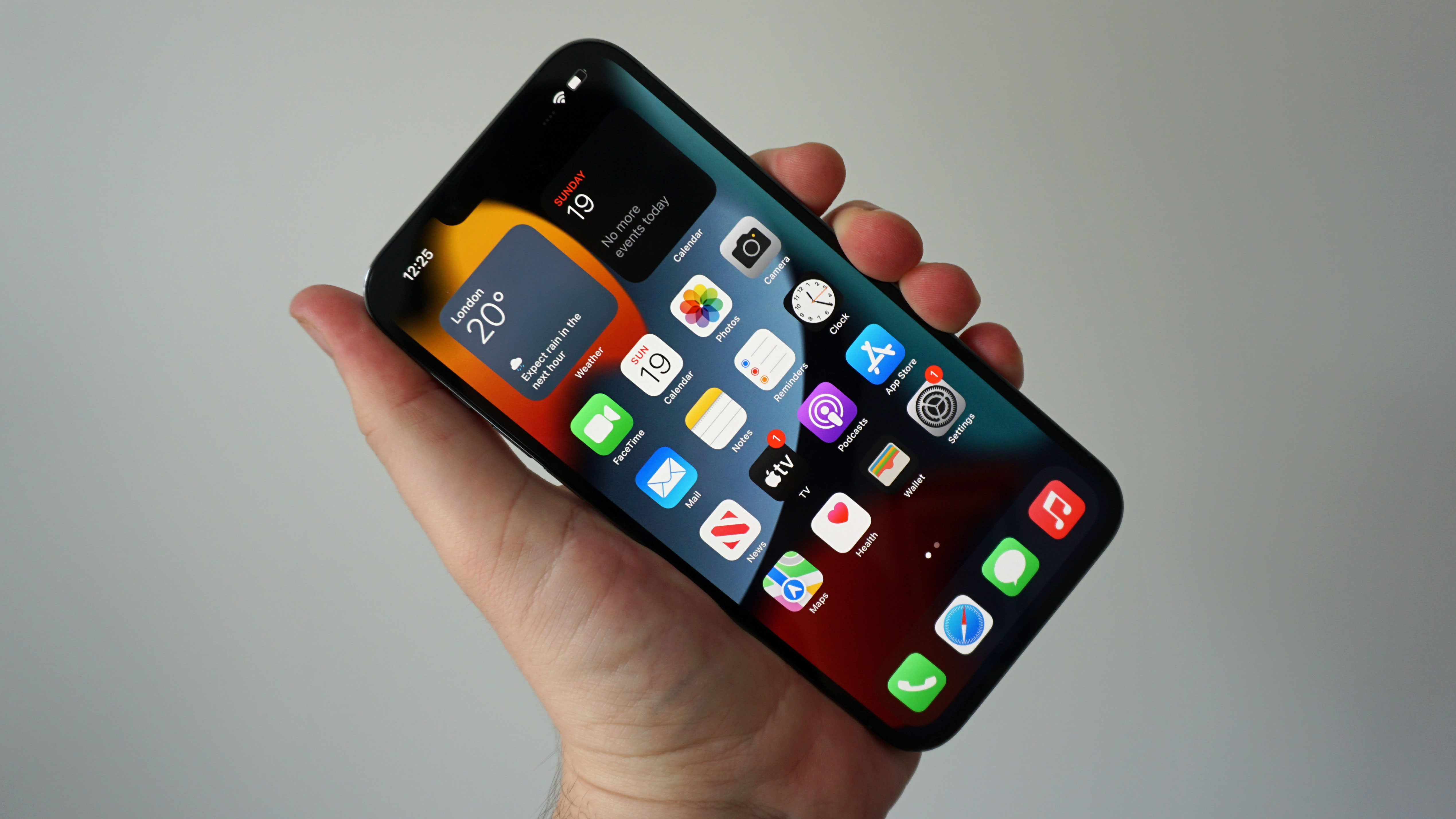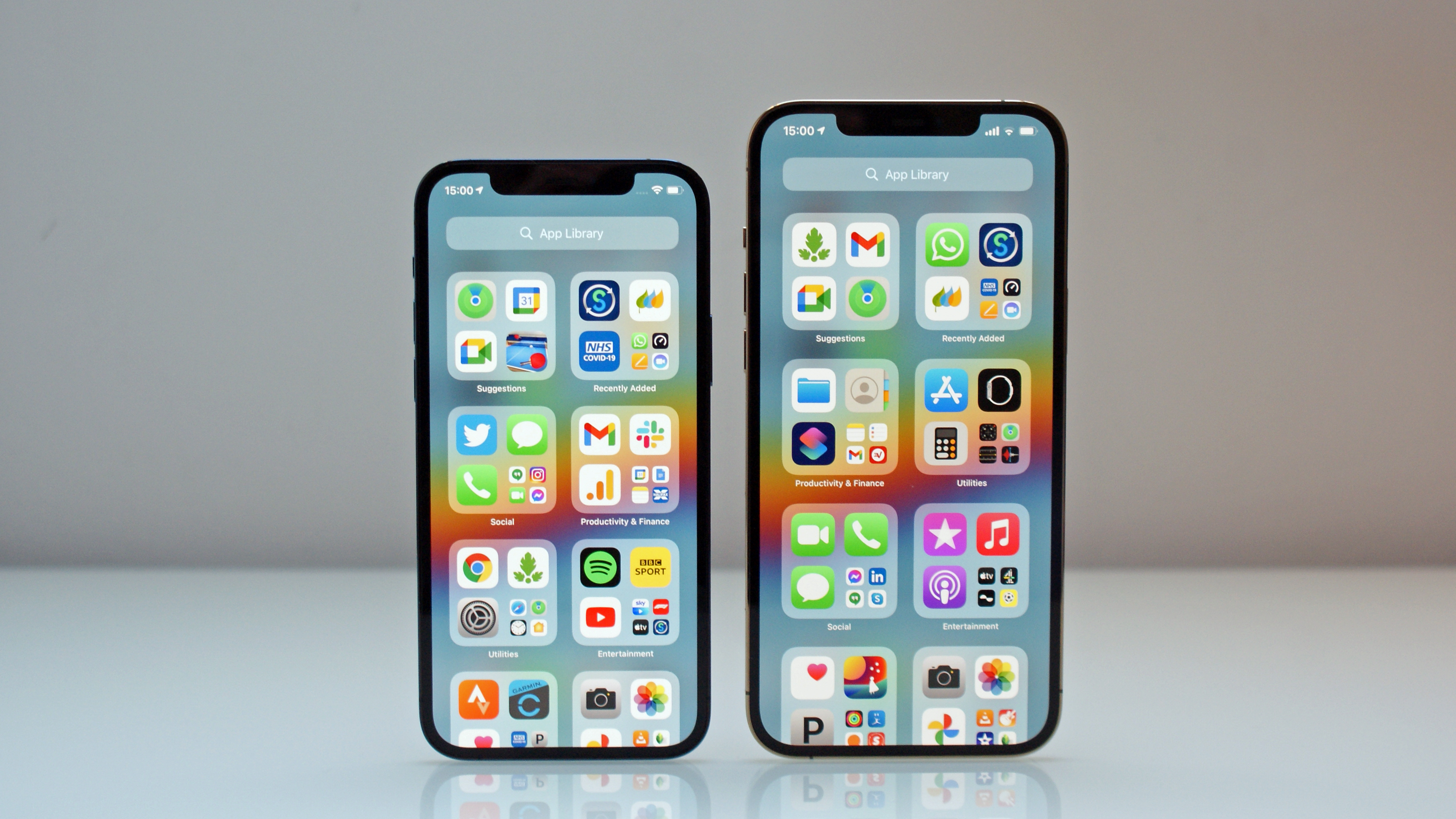Why you should buy the (expected) iPhone 14 Pro Max to save money later
Upgrades pay for themselves when you trade

When Apple launches an iPhone, it doesn’t just launch one device. With the Apple iPhone 13 came the iPhone 13 Mini, the iPhone 13 Pro, and the iPhone 13 Pro Max. The differences were pretty easy to see – the phones mostly varied in size. Every step up gave you more phone, for more money.
With the iPhone 14 series expected to be next, Apple is rumored to be adding an iPhone 14 Max to the non-Pro side of the lineup, that'll reportedly sport the same-sized display as the next Pro Max. The Pro devices are thought to be getting a faster Apple-made processor, while the non-Pro variants are expected to retain the iPhone 13 series’ A15 Bionic chip. The Pro devices will probably get better cameras too.
If that doesn’t make sense on paper, it makes a lot more sense when you sort things by price. Here’s the equivalent price chart for the 128GB versions of the existing iPhone 13 range, where you can see the easy steps monetary between each model.
- iPhone 13 Mini = $699
- iPhone 13 = $799
- iPhone 13 Pro = $999
- iPhone 13 Pro Max = $1,099
A customer walks into an Apple Store and says “I want an iPhone and I have $700 to spend,” or “$800” or “$900.” At almost every price point, Apple has an iPhone to match. While knowledgeable TechRadar readers might walk in knowing which model, storage capacity and color they're after upfront, plenty of buyers start with just a general brand direction (“iPhone”) and a budget.
Now, here’s what that pricing rundown could look like for the next generation of iPhones, based on rumors we’ve heard (again for base 128GB models of each device):
- iPhone 14 = $799
- iPhone 14 Max = $899
- iPhone 14 Pro = $1099
- iPhone 14 Pro Max = $1,199
Assuming the price stays the same for the base iPhone 14, this guide makes even more sense than the existing 13 range. Now, there is a consistent $100 step between the larger “Max” version of the base model and the “Pro” upgrade. While it may be difficult to explain why a larger-screen phone could cost less than the smaller Pro phone above it, it'd be easy for a salesperson to say “or for $100 more you can get this,” and repeat that statement until they get you to the top of the line.
Should I buy the iPhone 14 Max or the iPhone 14 Pro?
So, which device should you buy? Which upgrade offers the best value? If we’re deciding based on the experience you’ll get for your money, that’s harder to quantify. However, there is a calculation to figure it out.
Get daily insight, inspiration and deals in your inbox
Sign up for breaking news, reviews, opinion, top tech deals, and more.
If we look at the trade-in value of current devices, compared to the price of each device when it’s sold new, we can see whether it’s worth paying to step up your iPhone game.
If you purchased an Apple iPhone 12 when it first launched, it cost you the same as the iPhone 13 does today: $799. Apple will currently give you $400 if you trade that in for a new iPhone. You recoup 50% of your purchase price. A good start,
Now, if you purchased an iPhone 12 Pro for $999, Apple will give you $500 when trading it back in. You paid $200 more for the upgrade by opting for the Pro model over the standard iPhone 12, but Apple gives you $100 more for the trade; when you give the Pro back a year later. Apple again has paid for 50% of your phone, including 50% of the cost of upgrading from an iPhone 12 to an iPhone 12 Pro.

With the 12 Pro Max, it gets even better. You initially would have paid a further $100 more to swing for the Pro Max over the regular 12 Pro, and Apple gives you a total of $600 when you then trade that Pro Max back in. Essentially, Apple has paid for you to upgrade. For the smaller models you get a 50% return on your trade, but for the $1,099 128GB 12 Pro Max you get closer to 55%.
Is that enough to upgrade?
Absolutely, yes, you should upgrade to the largest version of the iPhone you can afford. Apple is effectively covering the difference, or most of the difference, and unless you were hoping for a smaller phone, the differences are worth the upgrade.
If rumors are true and the iPhone 14 Pro models sport an even more advanced chipset than the non-Pro models – including the rumored iPhone 14 Max – then it would likely be an even safer bet to choose the upgraded models, in terms of value retention, if a trade is in your iPhone 14 Pro/14 Pro Max's future.
When it comes to trade values, Apple is just as consistent with its trade-in offers as it is with its pricing. The iPhone 12 Mini gets you $300 back. The iPhone 12 gets you an additional $100, the 12 Pro a further $100 and the 12 Pro Max another $100 more (which again, means up to $600 at trade-in). Apple likes to make things clean and clear, and it would make sense that future trades will follow a similar pattern.
As such, the rumored iPhone 14 Max may seem like a worthy upgrade at only $100 more than the standard Phone 14, but if Apple offers a premium trade-in amount on this forthcoming Pro lineup as it does on the current one, it makes even more sense to skip the Max and move directly to the rumored iPhone 14 Pro (or even the 14 Pro Max, if you can swing it).
On the assumption you get $500 back for the iPhone 14 Max by the time the iPhone 15 series rolls around, compared to $600 and possibly more back for an iPhone 14 Pro, that makes the Pro a better buy, if the rumors are true and the phone launches next month.
Storage upgrades aren't worth anything later
There is one surprising place we wouldn’t spend our money, however, and that is expanding the storage. When you trade your phone, Apple doesn’t care if you purchased the smallest 128GB model or spent $300 more for the 512GB variant – you get the same trade-in value either way.
As such, we’d recommend buying the least storage you need. If you synchronize to the cloud constantly and stream all of your movies instead of downloading, the 128GB model should be just fine.
In any case, the iPhone has never been a true budget pick (we have our rundown of the best budget phones for that), but now there’s a direct reason to break the budget completely, for those considering the next iPhones. You may see a much larger total on your receipt when you pick up the best iPhone money can buy, but when Apple buys that iPhone back a year later you’ll have more money to spend on Apple’s next big thing.

Phil Berne is a preeminent voice in consumer electronics reviews, starting more than 20 years ago at eTown.com. Phil has written for Engadget, The Verge, PC Mag, Digital Trends, Slashgear, TechRadar, AndroidCentral, and was Editor-in-Chief of the sadly-defunct infoSync. Phil holds an entirely useful M.A. in Cultural Theory from Carnegie Mellon University. He sang in numerous college a cappella groups.
Phil did a stint at Samsung Mobile, leading reviews for the PR team and writing crisis communications until he left in 2017. He worked at an Apple Store near Boston, MA, at the height of iPod popularity. Phil is certified in Google AI Essentials. He has a High School English teaching license (and years of teaching experience) and is a Red Cross certified Lifeguard. His passion is the democratizing power of mobile technology. Before AI came along he was totally sure the next big thing would be something we wear on our faces.